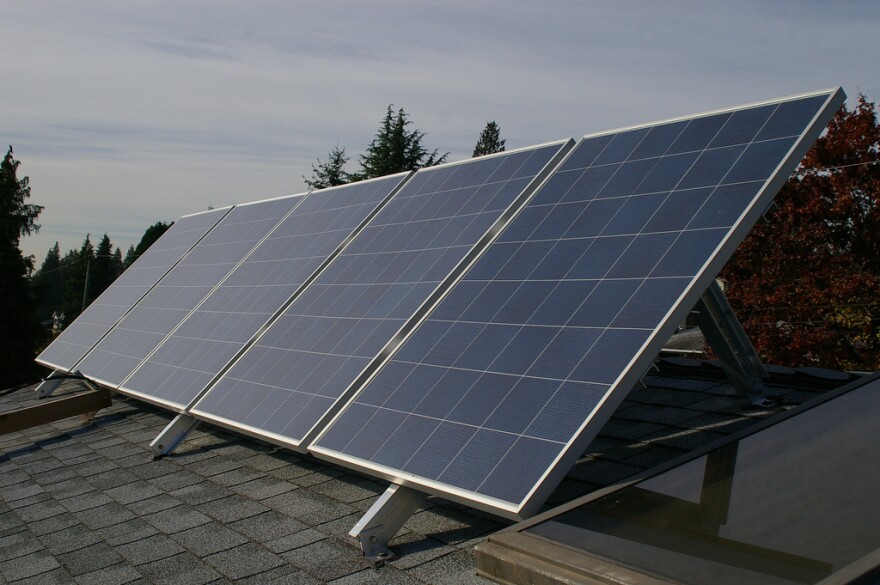At a public hearing Thursday, a state site evaluation subcommittee questioned developers behind a proposed 30 megawatt solar project about its potential impacts to the environment and wildlife.
The Chinook Solar array would cover about 100 acres near Route 119 in Ftizwilliam. If approved, it could be the largest solar array in the state.
Joe Persechino is an engineer and a consultant to NextEra Energy, which is developing the project. He says NextEra has been working with the Department of Environmental Services to make sure they’re following best practices when it comes to storm water.
"We’ve discussed the slopes we should be locating our solar array on, what can be done in areas of steeper slopes and how to prevent adverse impacts to storm water from those areas,” he said.
Persechino says NextEra would use meadow vegetation and detention basins as its permanent storm water system.
While construction is ongoing, there would be perimeter silt fencing and erosion control berms.
Wil Arvelo, one of the subcommittee members, asked whether the solar arrays and fencing could impede the free movement of wildlife.
Dana Valleau is an environmental specialist and another consultant to NextEra Energy. He says each array will have perimeter fencing around it, and the arrays will be spaced widely enough that larger wildlife can move through.
“For smaller wildlife, through consultation with New Hampshire Fish and Game, we have designed a fence with a six inch gap underneath it so smaller wildlife can pass underneath the fence and traverse the area,” he said.
At a site visit, Heath Barefoot, the project director, said the topography and access to power lines made these 100 acres a good fit for a 30 megawatt area.
The project would connect to a National Grid substation. The energy produced on the site would go to Massachusetts, Rhode Island and Connecticut, through a 20-year power purchase agreement with NextEra Energy.







